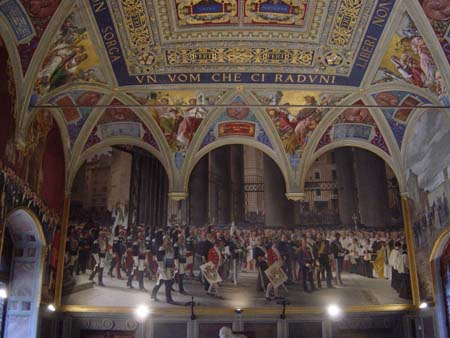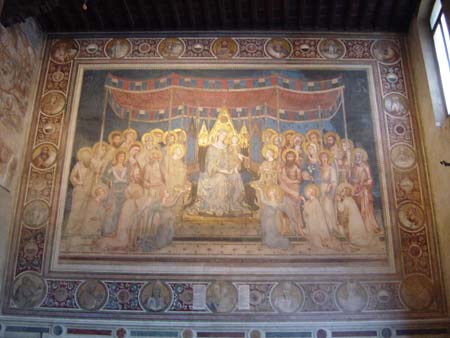KATIE'S KOMMENTS
September 20… The topic for today is…Frescoes

No matter what cathedral or chapel we go to in Europe there are hundreds sometimes even thousands of wall frescos. I have found the process and types of fresco painting to be very interesting, especially the stories of Michaelangelo painting his famous Sistine Chapel. We have learned about two major types of fresco painting, fresh and dry. We have also studied a little bit on the process of painting these very difficult and complicated frescos. The following paragraphs briefly discuss the processes of these types of frescos step by step.
Buon fresco also known as "True (fresh)"
This style of fresco painting is more difficult than the dry fresco technique but also lasts longer. The steps an artist used to paint a fresh fresco were…
1. Apply pigments on top of several layers of plaster
2. Before the last layer of plaster apply a sketch or cartoon of the painting
3. Reinforce your figures by applying black watercolor paint
4. Apply plaster to your painting in small sections and add color while it
is wet
5. As the plaster dries, the lime in the plaster will react chemically with
the carbon dioxide in the air to form calcium carbonate. This compound forms
a film over the colors which bind them to the plaster.
6. Warning: The painting must be done quickly and confined to all essentials.
You must know precisely how much watercolor the plaster will absorb to successfully
complete your fresco. Too much paint causes the surface to become "rotten."
Cutting away the defective portion and repainting it is then necessary.
7. If this procedure is done correctly the colors of your fresco should come
out very clear and bold
Some examples of famous fresh frescos are Michaelangelo's Sistine Chapel, Raphael's School of Athens, and Vasari's Last Judgment in the Duomo (Florence).
Fresco Secco also known as "Dry fresco"
This style of fresco painting is much easier than the fresh fresco technique but also doesn't last as long. The steps an artist used to paint a dry fresco were…
1. Rub dry plaster with pumice stone to remove the crust
2. Wash this with a very thin mixture of water and lime.
3. Apply your colors onto the plaster
4. Note: the effect of this technique does not match the clear and durable
effect of the fresh frescos. Your dry fresco will also not last as long as
the fresh ones will.
All in all, the various techniques of fresco painting dating back to the Ancient Egyptians served and still serve many purposes today. From the early churches covered in these colorful designs and figures to the decoration of modern buildings today the stories and history of these times have been preserved in these beautiful but complicated frescos.
